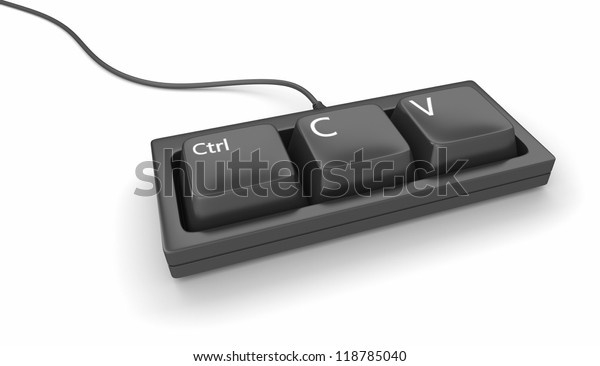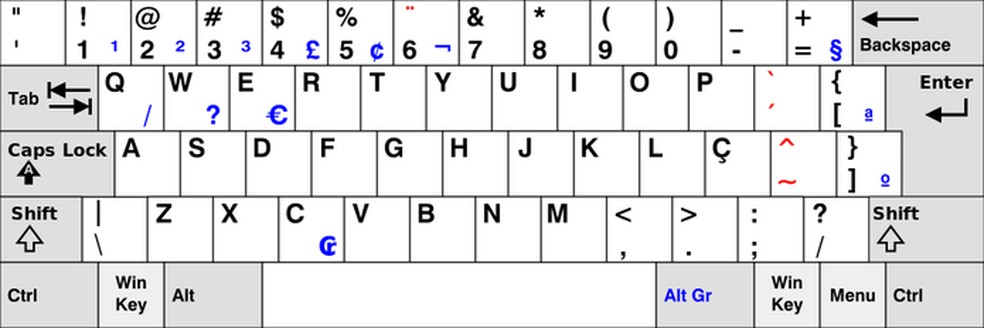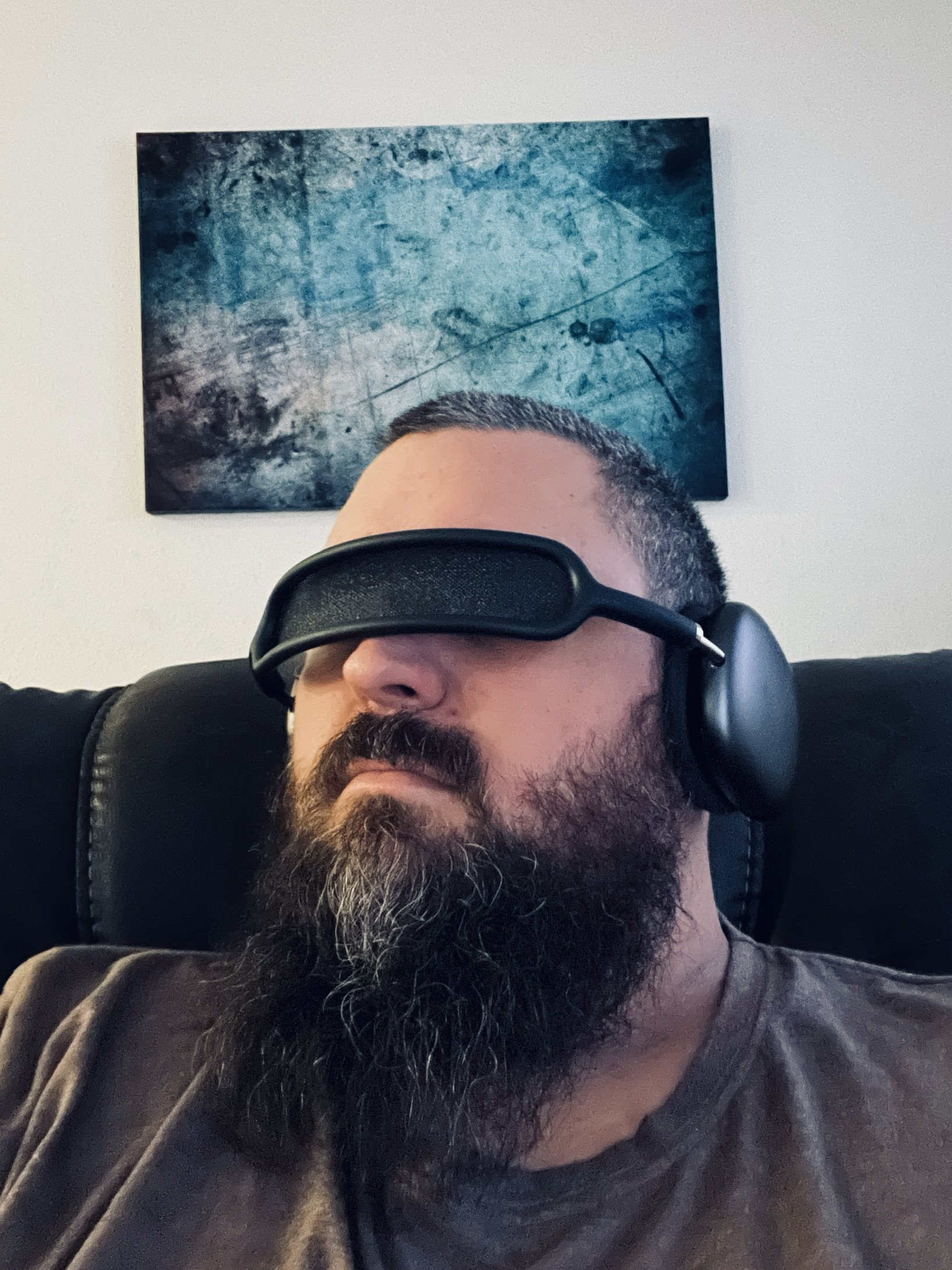I’ve used a US-QWERTY keyboard layout my entire life. I’ve seen other layouts that do things like reduce the size of the enter/backspace keys, move the pipe operator (|) and can’t wrap my head around how I would code on those.
What are your experiences? Are there any layouts that you prefer for coding over US English? Are there any symbols that you have a hard time reaching ( for example)?
Never used a US keyboard in my life. Why would you think US keyboard is the norm?
You’re on /c/programming.
Also, it’s even ISO standardized, so yeah, it’s an international norm.
Pragmatically: most programming languages are developed in a way to that it’s easy to type them up on a standard us layout. As English only has 26 letters, which is less than any other language using the latin alphabet (don’t even start me on languages with accents like ñ or that differentiate between à, a, á, and â), all the special characters are usually easily accessible. Most others layouts will tuck them away behind non-trivial combinations in favor of improving accessibility of extra letters and special characters. Cuz essentially in human language you barely need
*and[. So, I guess, right ctrl + left shift + 9 will do? how do you feel about coding in python on that. Or on a keyboard where the space for your|has been allocated to some letter ø and your OR operator has been moved to the numpad.There’s lots of programmers on languages that need more keys readily than us keyboard has. Äöüß, just to give an example.
I don’t know, every time I read a post like this I’m kinda speechless. I know lots of Americans and many of them are brillant and open-minded, but then there are posts like this which are completely oblivious that there are reasons for other keyboard layouts.
The reason OP can’t fathom programming on those is that they aren’t used to it. If you grew up with non-us layouts you similarly couldn’t fathom programming on the us layout.
Sometimes I feel like people refuse to even think about acknowledging that there are other experiences than their own. Go out, try out new things, exercise your brain and callenge yourself.
I’m not American, I speak a few European languages, I can type on a multitude of layouts. They all suck for programming, I know firsr-hand. And watching those people who “grew up with a layout” to use two hands for a
ctrl+zis both hilarious and painful.Wtf, who needs two hands for that? Do they have children’s hands?
It’s all a matter of habit - for me all layouts but my native sucks for anything to do on a keyboard. The only thing that sucks is if keybinds are set to shift-/ because / is already shift-7. I haven’t found a replacement for that yet. Forgot which program used that and for what, but I remember it was a bummer. Still wouldn’t spend all that time and energy and slowdown learning a different layout.
So now we go from “you are so culturally dense” to “I’m unable to learn a different layout”, “what’s wrong with your hands are you a midget”.
You’re on /c/programming.
Could just as well have been a writing prompt community. It’s just writing ANSI characters for the most part.
Also, it’s even ISO standardized, so yeah, it’s an international norm.
I’d wish something being ISO meant it’s the norm, but that’s just not the case. #ISO8601Gang
Pragmatically: most programming languages are developed in a way to that it’s easy to type them up on a standard us layout. As English only has 26 letters, which is less than any other language using the latin alphabet (don’t even start me on languages with accents like ñ or that differentiate between à, a, á, and â), all the special characters are usually easily accessible. Most others layouts will tuck them away behind non-trivial combinations in favor of improving accessibility of extra letters and special characters. Cuz essentially in human language you barely need
*and[. So, I guess, right ctrl + left shift + 9 will do? how do you feel about coding in python on that. Or on a keyboard where the space for your|has been allocated to some letter ø and your OR operator has been moved to the numpad.As a user of a keyboard layout with æ, ø, å, who also uses python daily, I can promise you that there are zero issues with it.
Most people will grow up with a keyboard layout designed for their native language’s need. If it uses Latin characters, there should be minimal issues using it for programming too.
I just explained what the issues are. Programming languages heavily rely on special symbols.
If you haven’t watched yourself from the outside, how do you know “there are zero issues with it”? You might be constantly breaking the typing flow and need to use a two-hand combo for some mundane
[]. While someone on a US layout never needs to lift their hands of the keys, because all they need is actrlwith a pinky + right hand within reach.When I learn a new language, I also learn a keyboard layout for it. Or do you also write in Spanish on your keyboard? How do you make an à and an á?
Ah, that’s right, you speak two languages, you’re stuck using your comfort zone layout, and you’d ofc argue “zero issues”.
If you haven’t watched yourself from the outside, how do you know “there are zero issues with it”? You might be constantly breaking the typing flow and need to use a two-hand combo for some mundane
[].Because I don’t have the issue you’re projecting. And if someone do have that issue, what type of programmer (assuming no physical disabilities) has their productivity limited by their typing speed? No one would be my guess.
While someone on a US layout never needs to lift their hands of the keys, because all they need is a
ctrlwith a pinky + right hand within reach.Cool, same here , just that sometimes we press alt gr instead of ctrl.
When I learn a new language, I also learn a keyboard layout for it. Or do you also write in Spanish on your keyboard? How do you make an à and an á?
ctrl + \ and then a for à and alt gr + \ then a for á. It’s really not much of a hurdle. And definitely faster than trying to learn a new keyboard layout that I can’t type on without looking.
Ah, that’s right, you speak two languages, you’re stuck using your comfort zone layout, and you’d ofc argue “zero issues”.
Are we talking actual languages or programming languages? Either case, you assumption is wrong. I don’t understand where all your antagonistic energy is coming from. It’s just a keyboard layout, there isn’t a single correct one. Just use what you’re used to and that you can write with a good flow, which for most people will be the layout they grew up with and can type in the blind with.
it’s even ISO standardized
Not only are there other ones that are also ISO standards when it comes to software layouts, but funny enough, when it comes to physical layouts, US keyboards normally follow an ANSI standard (not an ISO one), whereas many non-US keyboards typically follow a physical key layout known as “ISO Keyboard”, so one could argue those are more of an “ISO” standard.
right ctrl + left shift + 9 will do?
No keyboard layout uses ctrl like that… in fact, I don’t think you ever really need to press more than one modifier in any standard non-US keyboard. Unless you have a very advanced custom layout with fancy extra glyphs… but definitelly not for the typical programming symbols.
ISO keyboards actually have one more key and one more modifier (“AltGr”, which is different from “Alt”) than the ANSI keyboards.
In fact, depending on the symbol it might be easier in some cases. No need to press “shift” or anything for a
#or a+in a German QWERTZ keyboard, unlike in the US one. Though of course for some other ones (like=or\) you might need to press 1 modifier… but never more than 1, so it isn’t any harder than doing a)or a_in the US layout.
Always used it. You have instant semicolon instead of Ä, which you don’t use when coding, and brackets and curlies are a breeze, the comfort is well worth it
That comfort exists on other keyboards as well
There are like thousands of different keyboard layouts, and you can be certain there will be one that is more comfortable than the US for programming.
Colemak is considered the best for programming.
Swedish layout. Not ideal for coding (too many things like curly and square brackets etc are under altgr. And tilde and backtick are on dead keys.
But switching back and forth as soon as you need to write Swedish (for the letters åäö) is just too much work. And yes, in the Swedish alphabet they are separate letters, not aao with diacretics.
I’m swedish and I use EurKEY. It’s basically US but makes it possible to use Å/Ä/Ö through altgr + W/A/O. I don’t write that much swedish so I’m not too bothered, meanwhile the coding advantage is huge for
' " \ | / ? | [ ] { }.Win + space to swap is so fast and simple especially when it also swaps for you when switching apps
I use the UK layout, because I am British. Why would I use the US layout?
Average American trying to comprehend that people from other countries exist
… or just didn’t know UK keyboards were different
I mean the layout they mentioned is called “US” layout I’m sure they could deduct that there are other country specific ones
I’ve seen Tomorrow Never Dies, so I know there are Chinese keyboards.
The UK speaks English though, so I would have figured a UK keyboard would be at least very similar to a US keyboard, enough so that switching from one to the other wouldn’t be too hard.
US-defaultism has a catch: it sometimes accidentally extends to the Commonwealth. You won’t run into most of the internationalization quirks if all you’re comparing is “British English vs American English”.
[Sidebar: I notice this also when English speakers online assume that their audience at least has a vague idea of what Imperial units are, but while that is true of most native English speakers in the northern hemisphere who use feet and miles colloquially, for ESL audiences it’s almost always incorrect]I switched from AZERTY to US QWERTY permanently specifically to avoid all the issues of badly internationalized software. Bad default bindings (e.g. common vim operations like
{requiring the use of AltGr), but also things like games not working at all or only partially (e.g. the number row being either unbindable, or key hints naively showing as “&” and “é” instead of “1” and “2”). Surprisingly few devs understand the difference between key codes and characters, and lots of indie games straight up don’t even internationalize and require switching layouts (good luck if there is an in-game chat).
After getting into mechanical keyboards, the ANSI US keyboard layout has been useful as well because these are quite common. ISO mechanical keyboards are rarer, and Belgian AZERTY keycaps are borderline nonexistent.Also in practice I use the qwerty-fr layout which is the US layout with a French layer on AltGr. The kicker? It’s better at writing French than the French AZERTY which is missing a lot of letters (Ç, æ, œ, À, …). AZERTY is a terrible layout but that’s a separate discussion.
Of course the Americans should develop properly internationalized software, but I personally know several fellow Belgians who switched to QWERTY for (some of) the reasons outlined above.
Fellow Belgian here. I also switched to QWERTY.
deleted by creator
I prefer a British keyboard layout as that’s where I’ve always lived and that’s what all the computers come with here.
Actually no, Apple fucks it up a bit by having a weird hybrid between US layout and British layout which is pretty infuriating to have to learn (opt+3 for the # character? wtf Apple?), particularly given I switch between PC and Mac daily
I program like I learned it? I use my German QWERTZ layout. A lot of keys are different, yes, but I grew up with this layout and I’m used to it. Imagine giving me a US QWERTY layout and I would misstype every time. I even hate it when Windows swtiches my keyboard layout, even though I removed the shortcuts to it and I misstype constantly. Heck even Visual Studio switched my shortcuts and it sucked.
After some time I realized that (Game) Devs suck, because they forget that other layouts exist. Its not a big deal, but at some point I realized that the Chats on T, Y, U makes much more sense on a QWERTY Layout. Also Markdown with ` kinda sucks. For a codeblock, I need to hold shift and press the key that is left of backspace 3 times and then one space, because when I press it once, nothing happens but pressing it a second time, 2 appear. Pressing space let it appear directly. Or I type 4 and remove one.
But this it what I’m used to. And if I ever would work outside Germany, I will bring my own QWERTZ keyboard and require them to install the German Keyboard. I don’t need a German UI. I have all programming related software in English, because its easier to google stuff.
I ever would work outside Germany, I will bring my own QWERTZ keyboard and require them to install the German Keyboard.
The computer doesn’t know which labels are printed onto the key caps. You can type any layout you want, no matter the physical layout.
Except that there exist multiple physical layouts and then keys can be missing and some keys are shaped different.
ISO for life.
You can keep your stupid tiny little enter key.
No way - the two enter keys are about the same size - yours is just rotated 90 degrees and further away. That’s not an improvement. Even worse though is the tiny left shift key - I can’t get used to that.
With an ANSI keyboard you can comfortably reach the enter and left shift without taking your other fingers off the home row. With ISO you have to move your arm which is particularly bad for the shift key since you might need to press other keys at the same time, but now your hand is in the wrong position.
hahaha, no.
They told me not to reinvent the wheel, so all I need to program is this:

I use Spanish QWERTY layout and it’s… weird for coding.
I’m used to it from my whole life so that’s what I use but sometimes brackets or special symbols are weird.
I’ve always wanted to change to use US-International layout. So I can keep ñ and áéíóú, and also have easy access to coding symbols. But I have never got around it.
Anyhow I still think that whoever designed ISO layouts messed up. We should use US international layout. That’s my two cents.
I use a variant of the Neo-Layout called Bone. It’s an ergonomic layout optimized for German and English text. The base layer is already different (see the linked page), but I also really like it for programming, since there’s an entire layer with easily accessible symbols:

I should try that out. I’ve been using DVORAK for a while but have been thinking of switching to NEO
Oh, yeah you should. I mean I’d advice against it, but since you already know the pain of switching layouts… sure, go ahead! :D
I prefer Bone over Neo, Neo has quite broad software support though. I’m using Bone on Linux and macOS without any issues.
Could you please give a few insights into why bone over neo? I’ve used neo now for a few years, curious if it would be a fun extension to switch again!
(dead thread I know, but whatever)
It’s very similar, more like an evolution from Neo than a revolution. They switched a few keys and if you’re starting fresh I think I’d recommend Bone, but if you already know Neo I’m not sure switching is worth it. It could be fun though (if you consider learning a new layout fun ^^).
Especially because the thread was dead your answer is highly appreciated!
Appreciate it <3
Well, technically Dvorak is a US-ANSI layout, so … no.
Gang gang.
I grew up with DE ISO and switched to US ANSI with EurKey a few years ago. ANSI is so much better for programming!
Also more options for key caps.
I want to try ANSI also, but it seems pretty hard to find in EU. I’ve considered getting a keychron for my gaming setup but I don’t want a full on mechanical for work, and I don’t want to use ISO at work and ANSI at home because it will screw with my muscle memory.
AliExpress is your friend. Also there are great options on Amazon, depending on your location.
Why not use a mech at work? Because it’s too loud?
Yeah I don’t want to be a nuisance to my office neighbours. Right now I’m using a logitech mx keys, I could try looking for an ansi version of that.
I will probably order a keychron with low profile switches for my home setup, so I depending on how quiet it is I might get that for work as well.
I use EURkey, which is basically a superset of the US layout extended to support symbols from several European languages.
Thanks so much for this! I used to use a DE-ISO Layout with my old (first) keyboard, have now switched to ANSI with my first custom-mechanical keyboard and missed the special characters. This fixes everything, so thanks again :)
I’m pretty sure most people outside the US do that
A lot of us don’t live in the US to begin with, so I assume a significant portion of us just use whatever the local standard is. That’s where I’ve been at so far, the Brazilian layout is a QWERTY variant so not that different. It does make some things more awkward, but you get used to what you have to work with.

Brackets and curly braces are less convenient off the top of my head, backticks too. Vim is a tad less ergonomic without some extra fiddling, for instance. In fact, I’ve been considering getting a US keyboard for coding to make that kinda thing less of an issue, US international makes accents and whatnot accessible enough that I think I could make it work.
If you’re cheap like me, just change the keyboard layout on the software side and instead of looking at the now incorrect key caps, look at the American keyboard layout image on Wikipedia instead. It doesn’t take long to relearn the few differences. And the parentheses are more ergonomic on the us keyboard layout IMO.
Edit: compared to the German layout. Brazilian looks ergonomic enough for programming without having to switch.










